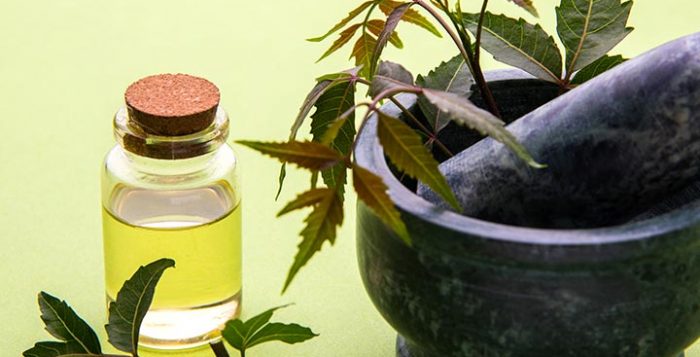The term “vasodilation” refers to a widening of the blood vessels within the body. This occurs when the smooth muscles in the arteries and major veins relax.
Vasodilation occurs naturally in response to low oxygen levels or increases in body temperature. Its purpose is to increase blood flow and oxygen delivery to parts of the body that need it most.
In certain circumstances, vasodilation can have a beneficial effect on a person’s health. For example, doctors sometimes induce vasodilation as a treatment for high blood pressure and related cardiovascular conditions. However, vasodilation can also contribute to certain health conditions, such as low blood pressure and several chronic inflammatory conditions.
Keep reading for more information on the effects of vasodilation on the body. This article also outlines the conditions that may cause vasodilation and the conditions in which vasodilation might function as a treatment.
Function
Vasodilation refers to the widening of the arteries and large blood vessels. It is a natural process that occurs in response to low oxygen levels or increases in body temperature. It increases blood flow and oxygen delivery to areas of the body that require it most.
A doctor may sometimes induce vasodilation as a treatment for high blood pressure, also known as hypertension, and its related conditions. Examples of such conditions include:
- pulmonary hypertension, which is high blood pressure that specifically affects the lungs
- preeclampsia and eclampsia, both of which are potential complications of pregnancy
- heart failure
A doctor may also induce vasodilation to improve the effects of a drug or radiation therapy. Vasodilation seems to be beneficial for this purpose because it increases the delivery of drugs or oxygen to the tissues that these treatments are designed to target.
Causes
There are several potential causes of vasodilation. Some of the most common include:
- Exercise: Vasodilation enables the delivery of extra oxygen and nutrients to the muscles during exercise.
- Alcohol: Alcohol is a natural vasodilator. Some people may experience alcohol-induced vasodilation as warmth or facial skin flushing.
- Inflammation: Inflammation is the body’s way of repairing damage. Vasodilation assists inflammation by enabling the delivery of oxygen and nutrients to damaged tissues. Vasodilation is what causes inflamed areas of the body to appear red or feel warm.
- Natural chemicals: The release of certain chemicals within the body can cause vasodilation. Examples include nitric oxide and carbon dioxide, as well as hormones such as histamine, acetylcholine, and prostaglandins.
- Vasodilators: These are medications that widen the blood vessels. Doctors sometimes use these drugs to help treat hypertension and associated conditions.
Vasodilation vs. vasoconstriction
Vasoconstriction is the opposite of vasodilation. Vasoconstriction refers to the narrowing of the arteries and blood vessels.
During vasoconstriction, the heart needs to pump harder to get blood through the constricted veins and arteries. This can lead to higher blood pressure.
Conditions associated with vasodilation
Vasodilation can give rise to the conditions outlined below.
Low blood pressure
The widening of blood vessels during vasodilation promotes blood flow. This has the effect of reducing blood pressure within the walls of the blood vessels.
Vasodilation therefore creates a natural drop in blood pressure.
Some people experience abnormally low blood pressure, or hypotension. In some cases, this may lead to symptoms including:
- nausea
- blurred vision
- lightheadedness or dizziness
- confusion
- weakness
- fainting
Chronic inflammatory conditions
Vasodilation also plays an important role in inflammation. Inflammation is a process that helps defend the body against harmful pathogens and repair damage caused by injury or disease.
Vasodilation assists inflammation by increasing blood flow to damaged cells and body tissues. This enables more effective delivery of the immune cells necessary for defense and repair.
However, chronic inflammation can cause damage to healthy cells and tissues. This can result in DNA damage, tissue death, and scarring.
Some conditions that can trigger inflammation and associated vasodilation include:
- infections
- severe allergic reactions
- chronic inflammatory conditions such as rheumatoid arthritis, inflammatory bowel disease, lupus, and Sjogren’s syndrome
Factors that can affect vasodilation
There are several factors that can affect vasodilation. Some of the more common examples are outlined below.
Temperature
A person’s body contains nerve cells called thermoreceptors, which detect temperature changes in the environment.
When the environment becomes too warm, the thermoreceptors trigger vasodilation. This directs blood flow toward the skin, where excess body heat can escape.
Weight
People with obesity are more likely to experience changes in vascular reactivity. This may occur when the blood vessels do not constrict and dilate as they should.
Specifically, people with obesity have blood vessels that are more resistant to vasodilation. This increases the risk of hypertension and associated cardiovascular diseases, such as heart attack and stroke.
Age
Blood vessels contain receptors called baroreceptors. These constantly monitor blood pressure and trigger vasoconstriction or vasodilation as needed.
As a person ages, their baroreceptors become less sensitive. This can reduce their ability to maintain steady blood pressure levels.
Blood vessels also become stiffer and less elastic with age. This makes them less able to constrict and dilate as needed.
Altitude
The air at high altitudes contains less available oxygen. A person at high altitude will therefore experience vasodilation as their body attempts to maintain oxygen supply to its cells and tissues.
Although vasodilation decreases blood pressure in major blood vessels, it can increase blood pressure in smaller blood vessels called capillaries. This is because capillaries do not dilate in response to increased blood flow.
Increased blood pressure within the capillaries of the brain can cause fluid to leak into surrounding brain tissue. This results in localized swelling, or edema. Medical professionals refer to this condition as high-altitude cerebral edema (HACE).
People at high altitudes may also experience vasoconstriction within the lungs. This can cause a buildup of fluid within the lungs, which medical professionals refer to as high-altitude pulmonary edema (HAPE).
Both HACE and HAPE can be life threatening if a person does not receive treatment.
Medications that induce or treat vasodilation
In some cases, a doctor may induce vasodilation as a treatment for certain conditions. In other cases, vasodilation may be what requires treatment.
Medications that induce vasodilation
Vasodilators are medications that cause the blood vessels to widen. Doctors may use these drugs to reduce blood pressure and ease any strain on the heart muscle.
There are two types of vasodilator: drugs that work directly on the smooth muscle, such as that in the blood vessels and heart, and drugs that stimulate the nervous system to trigger vasodilation.
The type of vasodilator a person receives will depend on the condition they have that needs treatment.
People should be aware that vasodilators can cause side effects. These may include:
- increased heart rate
- flushing
- fluid retention
Medications that treat vasodilation
Vasodilation is an important mechanism. However, it can sometimes be problematic for people who experience hypotension or chronic inflammation.
People with either of these conditions may require medications called vasoconstrictors. These drugs cause the blood vessels to narrow.
For people with hypotension, vasoconstrictors help increase blood pressure. For people with chronic inflammatory conditions, vasoconstrictors reduce inflammation by restricting blood flow to certain cells and body tissues.
Summary
Vasodilation refers to the widening, or dilation, of the blood vessels. It is a natural process that increases blood flow and provides extra oxygen to the tissues that need it most.
In some cases, doctors may deliberately induce vasodilation as a treatment for certain health conditions. For example, they may prescribe vasodilators to lower a person’s blood pressure and help protect against cardiovascular diseases.
In other cases, doctors may work to reduce vasodilation, as it can worsen conditions such as hypotension and chronic inflammatory diseases. Doctors sometimes use drugs called vasoconstrictors to help treat these conditions.
A person can talk to their doctor if they have any concerns about their blood pressure.




